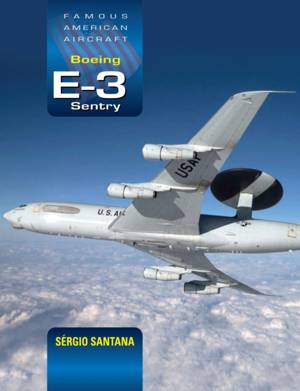
- Afhalen na 1 uur in een winkel met voorraad
- Gratis thuislevering in België vanaf € 30
- Ruim aanbod met 7 miljoen producten
- Afhalen na 1 uur in een winkel met voorraad
- Gratis thuislevering in België vanaf € 30
- Ruim aanbod met 7 miljoen producten
Zoeken
Omschrijving
In June 1963, two operational commands of the United States Air Force - the Air Defense Command (ADC) and the Tactical Air Command (TAC) - presented a joint proposal for an airborne early warning and control system far superior to the existing costly and complex 'DEW Line'. This network of warning radars installed on slow-moving aircraft, ground stations and ships to detect Soviet bomber formations was clearly incapable of not only detecting the new threat posed by nuclear missile attacks but also surviving them. The practical result of their proposal came in July 1970 when Boeing's 707-320B model was declared the winner of a competition for that AEW&C system - the E-3 Sentry was born.
Having flown for the first time on 6 February 1972, still under the designation EC-137D, the new aircraft was officially passed on to the United States Air Force (USAF) as E-3A on 24 March 1977 after having demonstrated its unprecedented detection capabilities in European airspace, including tracking targets at high supersonic speeds operated by Warsaw Pact assets.
Sentry's full operational capability was achieved in 1984 when the last of the 34 units ordered by the USAF was received. By that time, the aircraft had already begun to be delivered to NATO's AEW&C Force, beginning a trajectory that led to it being used by the Air Forces of nations as different as Saudi Arabia, France and the United Kingdom.
Throughout its operational life, the E-3's unique detection and command and control capabilities made it a mandatory presence in every major military campaign carried out by the countries that acquired it, determining that it was continually updated to face emerging threats, until its most recent designation, E-3G.
This book provides a complete history of the development and operational use of the aircraft, from its first mission to the most recent. While it is now gradually beginning to be phased out, the E-3 Sentry established the paradigm in AEW&C missions. This detailed monograph on the aircraft and its operations makes a significant contribution to our knowledge of this crucial but sometimes overlooked element of military aviation.
Having flown for the first time on 6 February 1972, still under the designation EC-137D, the new aircraft was officially passed on to the United States Air Force (USAF) as E-3A on 24 March 1977 after having demonstrated its unprecedented detection capabilities in European airspace, including tracking targets at high supersonic speeds operated by Warsaw Pact assets.
Sentry's full operational capability was achieved in 1984 when the last of the 34 units ordered by the USAF was received. By that time, the aircraft had already begun to be delivered to NATO's AEW&C Force, beginning a trajectory that led to it being used by the Air Forces of nations as different as Saudi Arabia, France and the United Kingdom.
Throughout its operational life, the E-3's unique detection and command and control capabilities made it a mandatory presence in every major military campaign carried out by the countries that acquired it, determining that it was continually updated to face emerging threats, until its most recent designation, E-3G.
This book provides a complete history of the development and operational use of the aircraft, from its first mission to the most recent. While it is now gradually beginning to be phased out, the E-3 Sentry established the paradigm in AEW&C missions. This detailed monograph on the aircraft and its operations makes a significant contribution to our knowledge of this crucial but sometimes overlooked element of military aviation.
Specificaties
Betrokkenen
- Auteur(s):
- Uitgeverij:
Inhoud
- Aantal bladzijden:
- 326
- Taal:
- Engels
Eigenschappen
- Productcode (EAN):
- 9781800353435
- Verschijningsdatum:
- 29/05/2026
- Uitvoering:
- Hardcover
- Formaat:
- Genaaid
- Afmetingen:
- 216 mm x 279 mm

Alleen bij Standaard Boekhandel
+ 111 punten op je klantenkaart van Standaard Boekhandel
Beoordelingen
We publiceren alleen reviews die voldoen aan de voorwaarden voor reviews. Bekijk onze voorwaarden voor reviews.








